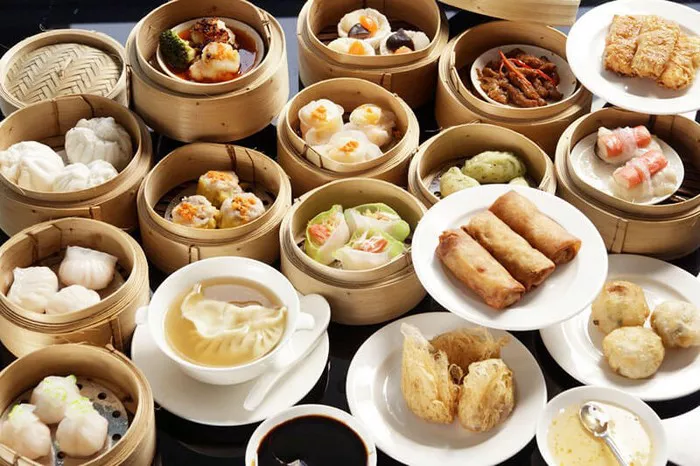Chinese food is loved worldwide for its rich flavors, variety, and texture. However, many dishes can be high in calories, making it difficult to choose a healthier option. If you’re looking for low-calorie Chinese food, it’s important to know which dishes are lighter while still offering the delicious tastes you crave. In this article, we will break down which Chinese foods are the least caloric, providing you with healthy options to enjoy without the guilt.
Understanding Chinese Cuisine and Calories
Chinese food is diverse, and calorie counts can vary greatly depending on the dish and preparation method. Some dishes are deep-fried or cooked with high-calorie sauces, which can increase the calorie count significantly. On the other hand, many Chinese dishes are steamed, stir-fried, or boiled, and these methods tend to be lower in calories.
The key to finding low-calorie Chinese dishes is to focus on steamed or stir-fried foods, lean proteins, and vegetables. Avoiding excessive sauces and opting for healthier cooking methods can also help reduce the calorie count of your meal.
1. Steamed Dishes: A Healthier Choice
One of the best ways to enjoy Chinese food without adding a lot of calories is to choose steamed dishes. Steaming preserves the natural flavors of the food and requires no added fats, making it a great low-calorie option.
Steamed Dumplings
Steamed dumplings are a popular Chinese appetizer, and when compared to their fried counterparts, they are much lower in calories. A serving of steamed vegetable or chicken dumplings contains around 100–150 calories, depending on the filling and size. They are a good source of protein and fiber, especially when made with vegetables like cabbage, mushrooms, and carrots.
Steamed Fish
Steamed fish is a common dish in Chinese cuisine, particularly in Cantonese-style restaurants. Fish like tilapia, cod, and snapper are often steamed with ginger, scallions, and a light soy sauce. A serving of steamed fish typically contains only 150–200 calories, depending on the size and type of fish. Fish is a great source of lean protein, omega-3 fatty acids, and important vitamins and minerals.
Steamed Vegetables
Vegetables are an essential part of Chinese cooking, and many can be steamed to retain their nutrients and flavor. Common vegetables used in Chinese cuisine include bok choy, spinach, broccoli, and mushrooms. A cup of steamed mixed vegetables typically contains around 50–70 calories. These vegetables are rich in vitamins, minerals, and fiber, making them an excellent choice for anyone looking to lower their calorie intake.
2. Stir-Fried Dishes: Choose Lean Proteins and Veggies
Stir-frying is a cooking method that uses a small amount of oil to cook food quickly at high heat. While stir-frying can add some calories, choosing lean proteins and plenty of vegetables can help keep the calorie count low.
Stir-Fried Chicken with Vegetables
A simple stir-fry of chicken and vegetables is one of the lowest-calorie options available at many Chinese restaurants. When made with lean chicken breast, this dish typically contains around 250–300 calories per serving. The vegetables, such as bell peppers, carrots, broccoli, and snow peas, add bulk and nutrients without adding many calories.
Stir-Fried Shrimp
Shrimp is a lean source of protein and a great low-calorie option for stir-fries. A typical serving of stir-fried shrimp with vegetables will have around 200–250 calories. Shrimp is low in fat and high in protein, making it an excellent choice for those looking to keep their calorie intake in check.
Stir-Fried Tofu with Vegetables
Tofu is another great protein source for low-calorie stir-fries. It is rich in plant-based protein and contains minimal calories. A stir-fry made with tofu and vegetables like bok choy, mushrooms, and bell peppers can contain just 200–250 calories per serving. Tofu absorbs the flavors of the sauce and vegetables, making it a versatile and satisfying dish.
3. Soups: Warm and Low-Calorie Options
Chinese soups can be a healthy choice, as many of them are broth-based and low in calories. Soups filled with vegetables and lean proteins are excellent options if you’re looking for a light, filling meal.
Hot and Sour Soup
Hot and sour soup is a popular choice in many Chinese restaurants. While it does contain some oil and ingredients like tofu, mushrooms, and bamboo shoots, a typical serving contains around 100–150 calories. The broth is usually made with chicken or vegetable stock, which keeps it low in calories. It’s a flavorful, tangy soup that won’t add too many calories to your meal.
Egg Drop Soup
Egg drop soup is another low-calorie option, often containing just 60–80 calories per serving. The soup is made with a simple broth, eggs, and a few seasonings, making it a light and filling choice. It provides a good amount of protein from the eggs, while the broth keeps the overall calorie count low.
Wonton Soup
Wonton soup is a popular dish made with steamed dumplings (wontons) filled with ground pork or shrimp. A serving of wonton soup typically contains around 150–200 calories. While the wontons do add some calories, the broth is light and helps keep the overall calorie count low.
4. Choose Broth-Based Noodles Instead of Fried Noodles
Many Chinese dishes feature noodles, but some preparations—like fried noodles—can be quite high in calories due to the oil used in cooking. Instead, choosing broth-based noodle soups can help lower the calorie count while still satisfying your craving for noodles.
Noodle Soups with Lean Protein
Noodle soups are often made with chicken, shrimp, or tofu, and they are typically low in calories when prepared with a light broth. A serving of noodle soup made with lean protein and vegetables can range from 250 to 400 calories, depending on the type of noodles and protein used.
Vegetarian Chow Mein (without deep-frying)
Vegetarian chow mein made with stir-fried vegetables and noodles can be a great low-calorie option if the dish is not fried. When prepared with minimal oil and loaded with vegetables like cabbage, carrots, and bell peppers, a serving of vegetarian chow mein typically contains around 250–300 calories. Be sure to ask for light sauce to further reduce the calorie content.
5. Avoid Sauces High in Sugar or Oil
Many Chinese dishes are served with rich, flavorful sauces. However, these sauces—such as sweet and sour sauce, General Tso’s sauce, or orange sauce—are often high in sugar and calories. If you’re looking to keep your meal light, consider asking for the sauce on the side or opting for lighter options like soy sauce or hoisin sauce, which are lower in calories.
6. Low-Calorie Chinese Food in Summary
To summarize, the key to choosing low-calorie Chinese food lies in opting for steamed or stir-fried dishes, selecting lean proteins like chicken, shrimp, or tofu, and loading up on vegetables. Here are some top choices:
- Steamed dumplings (vegetable or chicken)
- Steamed fish (like tilapia or snapper)
- Stir-fried chicken with vegetables
- Stir-fried tofu with vegetables
- Hot and sour soup
- Egg drop soup
- Wonton soup
- Vegetarian chow mein (lightly stir-fried)
These dishes are flavorful, nutritious, and much lower in calories compared to their fried or heavy-sauced counterparts. By making mindful choices and focusing on steamed, stir-fried, or broth-based options, you can enjoy Chinese food without consuming unnecessary calories.
Conclusion
When eating Chinese food, it’s easy to find low-calorie options if you know what to look for. Steamed dishes, stir-fries with lean proteins, and broth-based soups are your best bet for a light and satisfying meal. Avoiding heavy sauces and opting for vegetables can also make a big difference in keeping your calorie count in check. With these tips in mind, you can enjoy Chinese cuisine while maintaining a healthy, balanced diet.
Related topics:



























